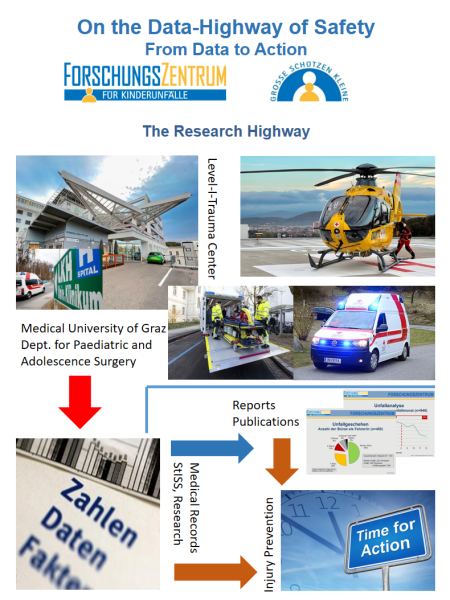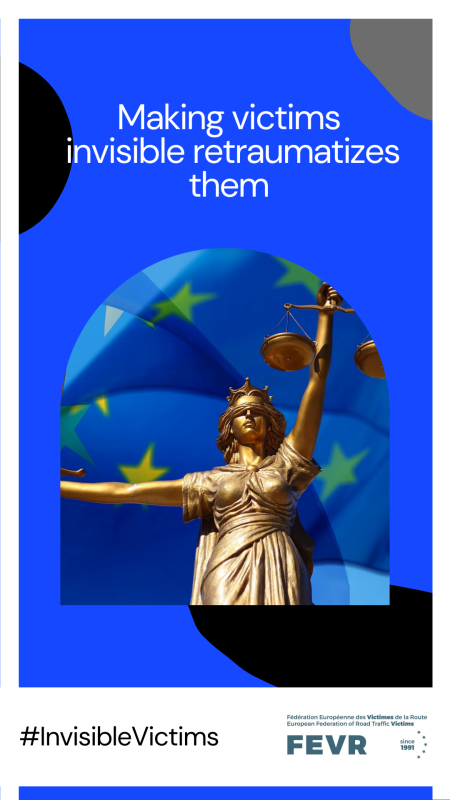Our members are dedicated to improving road safety and sharing their knowledge with the wider community. Here, you can explore our members' good practices – initiatives that have been assessed for their effectiveness in addressing a road safety problem and have proven results.
Get inspired – and sign up to share your good practices too!
Thursday, April 27, 2023
With our innovative project Zero Objective we are addressing the figure of the designated driver among the youth. Although many of the students who did the activity are still in the process of getting their driver's license, they didn’t hear before about the designated driver. Thanks to ZERO OBJECTIVE PROJECT they are already very aware that they will put into practice what they learned in our designated driver workshop, generating in the attendees the commitment to take care of oneself and all the other drivers.
Zero Objective project is an awareness campaign based on the testimony of a victim of a road crash that was implemented by P(A)T during 2021 and 2022 with numerous groups of young pre-drivers (17 to 24 years old), and its power to form reliable drivers is still obvious.
Zero Objective project is an awareness campaign based on the testimony of a victim of a road crash that was implemented by P(A)T during 2021 and 2022 with numerous groups of young pre-drivers (17 to 24 years old), and its power to form reliable drivers is still obvious.

Wednesday, April 26, 2023
We have been and continue to address issues associated with road accidents and medical treatments and are creating a process and methodology for data export. The results are the basis for injury prevention work.

Wednesday, April 26, 2023
Maaltijdbezorgers zijn vaak jong en daardoor kwetsbaar in het verkeer. Ze rijden bovendien op voertuigen zoals elektrische fietsen en scooters waarvan bekend is dat hier vaker (ernstige) ongelukken mee gebeuren. Uit ons onderzoek blijkt dat 24% van de maaltijdbezorgers en 32% van de flitsbezorgers een ongeluk meemaken.
Op basis van berichten in de media lijkt er meer dan twee per week een verkeersongeval plaats te vinden. Meer dan de helft daarvan is met een ambulance naar het ziekenhuis gebracht: gemiddeld één keer per week. Bezorgbrommers rijden bijna zes keer vaker schade dan privé brommers.
Dat laat zien hoe belangrijk het is om aandacht te besteden aan verkeersveiligheid van bezorgers. Vaak willen werkgevers wel iets doen aan de verkeersveiligheid van hun werknemers, maar weten zij niet precies hoe. Daarom heeft TeamAlert in samenwerking met de centrale overheden Bezorg Veilig ontwikkeld. Bezorg Veilig helpt werkgevers en bezorgers (veilig) op weg. Op Bezorg Veilig vinden ze tips & tricks hoe ze de verkeersveiligheid van hun maaltijdbezorgers kan vergroten en kunnen ze een gratis online gevaarherkenningstraining volgen.
Op basis van berichten in de media lijkt er meer dan twee per week een verkeersongeval plaats te vinden. Meer dan de helft daarvan is met een ambulance naar het ziekenhuis gebracht: gemiddeld één keer per week. Bezorgbrommers rijden bijna zes keer vaker schade dan privé brommers.
Dat laat zien hoe belangrijk het is om aandacht te besteden aan verkeersveiligheid van bezorgers. Vaak willen werkgevers wel iets doen aan de verkeersveiligheid van hun werknemers, maar weten zij niet precies hoe. Daarom heeft TeamAlert in samenwerking met de centrale overheden Bezorg Veilig ontwikkeld. Bezorg Veilig helpt werkgevers en bezorgers (veilig) op weg. Op Bezorg Veilig vinden ze tips & tricks hoe ze de verkeersveiligheid van hun maaltijdbezorgers kan vergroten en kunnen ze een gratis online gevaarherkenningstraining volgen.

Monday, April 24, 2023
Mit einer Flottengröße von über 2600 Fahrradkurier*innen nimmt foodora die Sicherheit sowohl der Rider als auch aller anderen Verkehrsteilnehmer*innen, die mit foodora Ridern in Kontakt kommen, sehr ernst. Das Ausliefern von Speisen, Lebensmitteln und Waren des täglichen Bedarfs auf großteils Fahrrädern und im urbanen Straßenverkehr erfordert gute Kenntnisse der Verkehrsregeln. foodora arbeitet mit Ridern aus insgesamt 96 verschiedenen Nationen zusammen. Oberstes Ziel der Initiative "foodora Rider Safety" ist es, sie sicher in den Straßenverkehr zu integrieren.

Saturday, April 22, 2023
In Europe, the application of Victims’ Rights Directive has been very disappointing for victims of road crashes, since a very small percentage has benefited from the Victim’s Statute. One of the reasons is the lack of recognition of victims of road crashes as victims of a crime, even though most of the time it is the result of assaults in traffic as a result of illicit, reckless and illegal conduct.
That is why we want to remind that road crash victims are also victims of violent acts that fall within the criminal sphere and that road violence causes deaths and injuries with lifelong consequences and must be protected by the Victims’ Rights Directive.
That is why we want to remind that road crash victims are also victims of violent acts that fall within the criminal sphere and that road violence causes deaths and injuries with lifelong consequences and must be protected by the Victims’ Rights Directive.